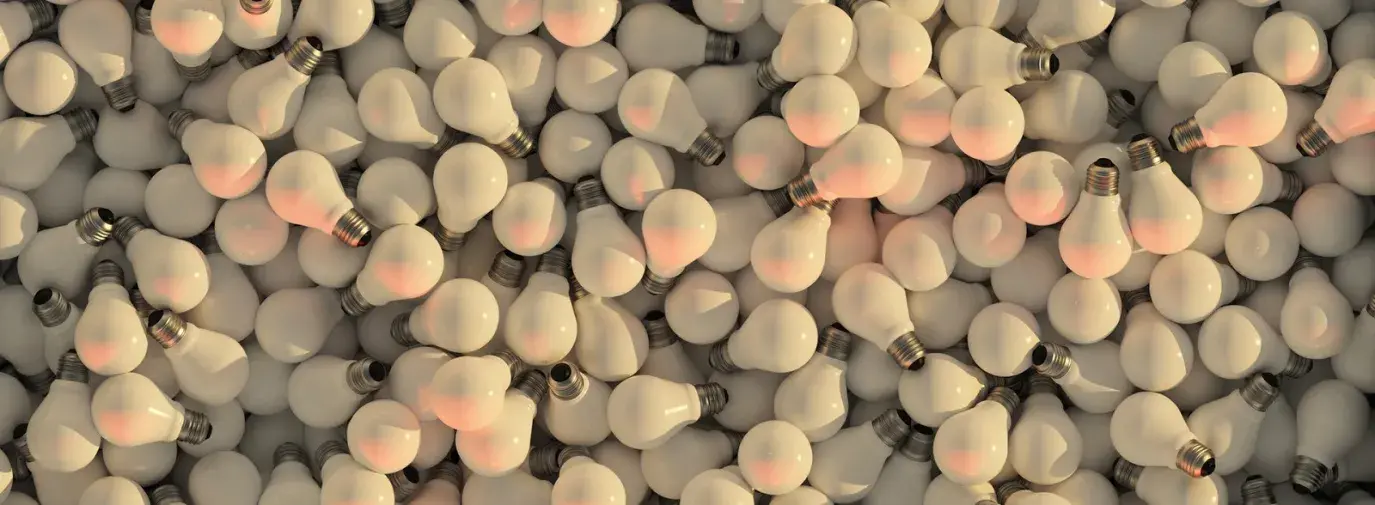
Click to view this list as an illustrated infographic.
Whether you're looking to save money or save the environment, there are many ways you can save energy around the house. Learn how to cut your energy bill by 50% with these 10 easy, energy-saving tips.
Save 2%: Turn Off the Lights
Be mindful about shutting lights off when you leave a room. If you have a forgetful family member or roommate, place reminders on the switchplates or consider installing motion-detector switches.
ADVANCED: Replace your bulbs with CFLs or LEDs.
Save 19%: Install Ceiling Fans
Install Energy Star ceiling fans in the rooms you use most often. They’ll help keep you cool in the summer while your AC works less or not at all. In the winter, switch them to turn clockwise to circulate the warm air rising up to the ceiling back down into the room.
ADVANCED: Go with a white roof or install a green roof, which will prevent heat loss through the roof in winter and cool your home down in the summer.
Save 4%: Show Your Fridge Some Love
The refrigerator is one of the biggest energy-users in your home, and if it was built before 1993, it’s a huge energy hog. Clean the coils on your fridge every six months to keep it running efficiently, and take up unused space with jugs of water, which will hold in the cold better. Eliminate a second refrigerator, if you have one.
ADVANCED: Replace or recycle your older appliances wisely. Buy energy-efficient new appliances when possible.
Save 9%: Wash Your Clothes in Cold Water, Let them Air Dry
Washing clothes in cold water gets them just as clean as hot, and cuts your washer’s energy use in half. Drying your clothes on an outdoor line or indoor rack can save around $100 in energy costs every year.
ADVANCED: Water and energy use are intertwined: producing energy uses water, and providing clean drinking water requires energy. Take steps to conserve water everywhere in your home.
Save 12+%: Upgrade Appliances
Appliances use 20 percent of the energy in the average US home. When it’s time to buy new appliances, look for the most efficient Energy Star model you can find. The biggest energy hogs in a home are usually the refrigerator (particularly if it was built before 1993) and clothes dryer.
Save 1-3%: Give Your Water Heater A Blanket
Adding an insulating cover to your water heater can reduce heat loss by 24-45 percent. Also, turn your water heater down by ten degrees, if possible. If half of US households did so, it would prevent 239 tons of greenhouse gas emissions.
ADVANCED: Upgrade to a tankless or solar water heater, and save 14% off your energy bill. And while you’re in your garage, consider buying a super-efficient car or, better yet, a bike.
Save 12%: Plug Air Leaks
Replacing windows is often the least cost-effective step you can take to save energy, so seal air leaks around doors and windows instead with caulk and weatherstripping. Also, consider putting up insulating curtains, pasting low-e film to the window glass, and installing storm windows or plastic window films to further cut down on heat loss in winter.
ADVANCED: Get a RESNET or Home Performance with Energy Star audit to help pinpoint your biggest energy losses.
Save 10%: Use Your Programmable Thermostat
Nearly half of US homes already have a programmable thermostat. Dig out that owner’s manual and learn how to use yours to maximize the efficiency of your heating and cooling systems. Program your thermostat to turn itself down or off when you’re sleeping or are at work or school.
ADVANCED: Set a winter target of 68°F when you’re at home and 55°F when you’re away. Set a summer target of 78°F when you’re at home and 82°F when you’re away.
Save 3%: Air Dry Dishes
Using your dishwasher instead of washing dishes by hand can save water, but if you let the drying cycle run, you’re wasting energy and money. Skip the drying cycle and let your dishes air dry. Newer, more effective and efficient dishwashers allow you to skip the step of pre-rinsing your dishes before you load them in the dishwasher.
ADVANCED: Run your dishwasher (and your clothes washer, for that matter) at night, during off-peak hours. It’s our country’s peak demand that determines the expansion of dirty coal-fired power plants.
Save 5%: Eliminate "Phantom Load"
Many electronics still suck energy even when they’re turned off--such as powering that little clock on your microwave when it’s not in use. Unplug your electronics or plug them into a power strip and switch it off to save on this “phantom load.”
ADVANCED: Use a Kill-A-Watt meter to measure the energy use of appliances and gadgets, even when they’re turned off. You can also keep track of your home’s entire energy use with a whole-house energy monitor.
Save More Money on Energy!
The following incentives can help you save money on efficiency retrofits:
- FEDERAL, STATE, AND LOCAL INCENTIVES: Search the database of state incentives to find tax incentives and rebates for your renewable and energy efficiency home improvements.
- HOME STAR: Proposed legislation would create a “Home Star” program, providing rebate incentives to the American public to encourage Home Performance with Energy Star audits, energy-efficient retrofits, and the purchase of efficient appliances. At press time, Home Star legislation was included in the July 2010 Clean Energy Jobs and Oil Company Accountability Act.
If we don’t take widespread, systemic action to reduce our energy use, the impacts of climate change will be severe. Fortunately, we have existing solutions to address climate change right at home. Learn how to cut your carbon use at home even further, and green your energy use whenever possible.







